Blending a Grand Reserve Cabernet with Kendall Jackson
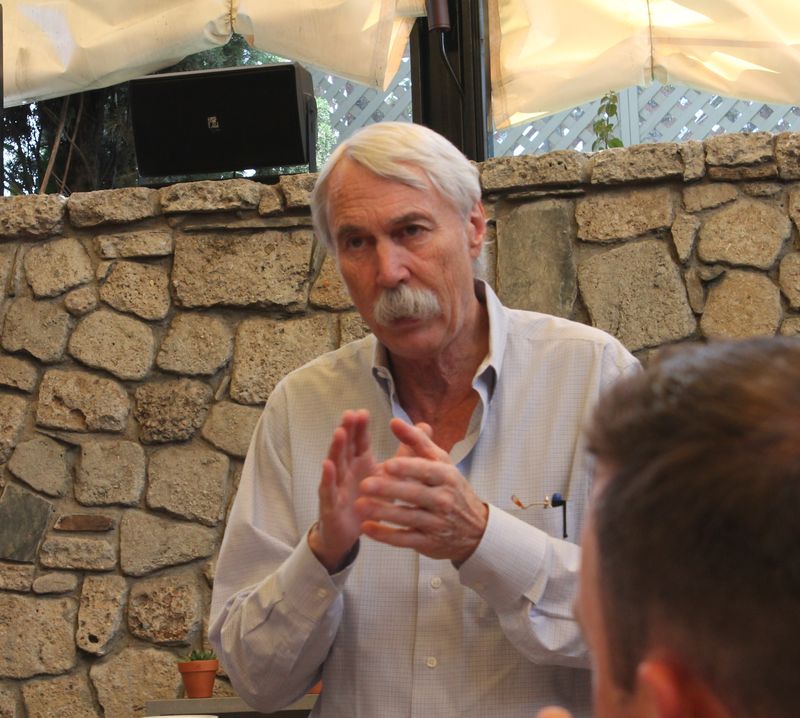 Randy Ullom of Kendall Jackson Wines
Randy Ullom of Kendall Jackson Wines
“Being big can sometimes hamstring you in the wine industry with buyers and consumers” Randy Ullom, winemaker at Kendall Jackson (yes, of the huge supermarket brand label), began his presentation to a few invited guests.
One of the groups KJ has chosen not to be hamstrung by is stockholders. The company has been family owned for over 3 decades, continuing to reinvent the wine business, and choosing to gain more control of their own destiny. He continued with a brief overview of what makes a great wine, and what goes into the creation of KJ wines.
KJ owns 40,000 acres in California, and has recently purchased land in the Willamette Valley in Oregon. Also, in further pursuit of controlling their destiny, they even source their own trees and logs for the barrels used for aging their wines.
Okay, before I go any further, I know there may be some of you out there who are wondering why I would spend time going to my second tasting of Kendall Jackson – of the super market label – wines (I visited their tasting room in Sonoma County a few months back where, by the way, they included some of their Grand and Vintner Reserve wines). They also happened to have sent some of their wines to serve at a luncheon of Southern food I hosted back in January which made me realize I definitely had to rethink that big supermarket profile. So I was delighted to receive an invite to a wine blending seminar they held here in So Cal, where I would get a chance to try my hand at blending one of those Grand Reserve wines.
Have you ever wondered why a certain varietal- say a Cabernet- can vary so much from label to label, from year to year? I was about to get hands on insight into why that’s so.
Randy told us that for their Grand Reserve wines, they may begin with 600 lots and work down to 50 to select the finest for blending, each with their own distinctive characteristics (expressions of the geography, geology and climate of the region the grapes are grown in -aka terroir) to bring to the finished product. My favorite little meme re: terroir – “a wonderful vineyard will have a great view- a vista, a hill, a ridge-, and if it has a great view, it’ll produce a great wine,” Randy explained. “Vineyard sites found on hillsides and mountain ridges are planted in soil that tends to be rockier and more sparse than soils on the valley floor. This challenges the grapes to ripen, and it’s that threshold of ripeness that produces the best wines. Higher elevation vineyards will result in less vigor in the vines due to higher stress placed on them through meager soils. These vines naturally produce lower yields, which means fewer grape clusters and smaller berries, resulting in greater concentration of flavors and firm structure.”
Fortunately they had worked down to only 5 wines which they placed before us, so that we could attempt to match the Grand Reserve waiting at the finish line. There were 3 varying Cabernets, 2 from the Alexander Valley (the largest and most fully planted wine region in Sonoma County) and 1 from Knights Valley (the easternmost and warmest of viticultural regions of the county). We also had a Bennett Valley Merlot, and a Knights Valley Petit Verdot to play with, along with pipettes, which he instructed us were for drawing up a bit of the wine by sipping – like we would on a straw, then releasing it into our blending glass.
Randy continued to throw out to us factors to consider when blending, as we worked. “What are you making this wine for- 10 years down the line, 20 years? Is it for you, your family, America?”
Phew! It’s much more work than I’m guessing you’re imagining. I have to admit that my blend was not even close to the Grand Reserve we were working on matching. It was a little frustrating, and after a while, I discovered that it began to grow difficult even tasting those subtle variations we were pursuing. “That’s why Randy gets paid the big bucks,” Larry O’Brien, Master Sommelier and acting MC for the event, piped in.
Ah well, it sure was fun trying.
Oh- and thanks to Sadie L.A. for hosting us, and feeding us this wonderful lunch afterwards. All that tasting works up quite an appetite!
I know shrimp isn’t usually what comes to mind when drinking Cabernet, but hey – your LA2LA Chef is always down with shrimp.
These Baby Lamb Chops were so inviting, I had to grab a bite before I remembered the pic!
Braised Short Ribs of Beef- a classic pairing with Cabernet Sauvignon.



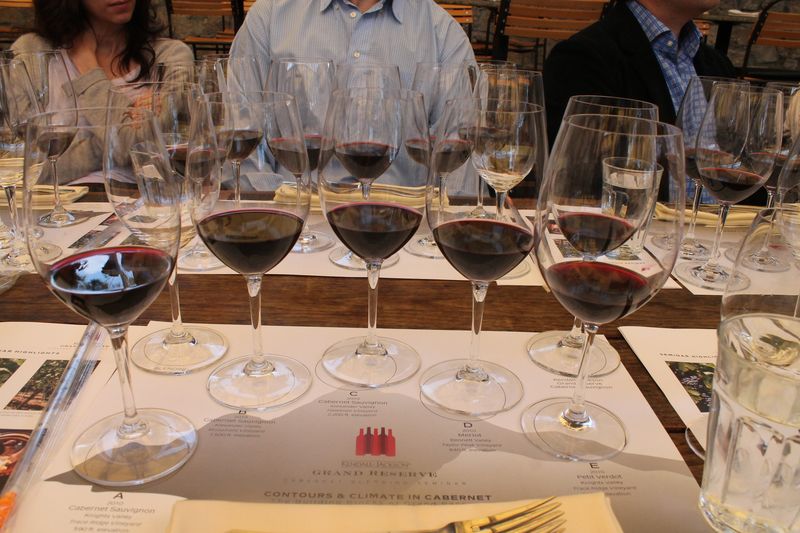
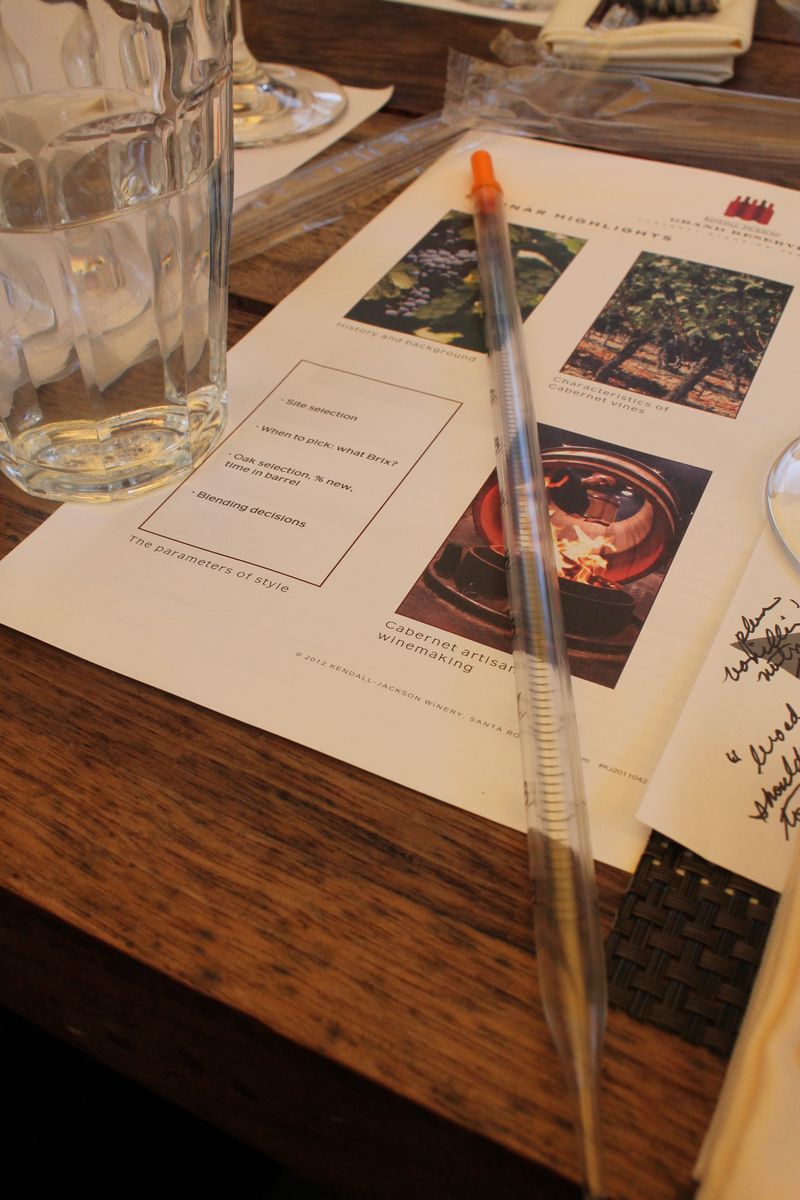
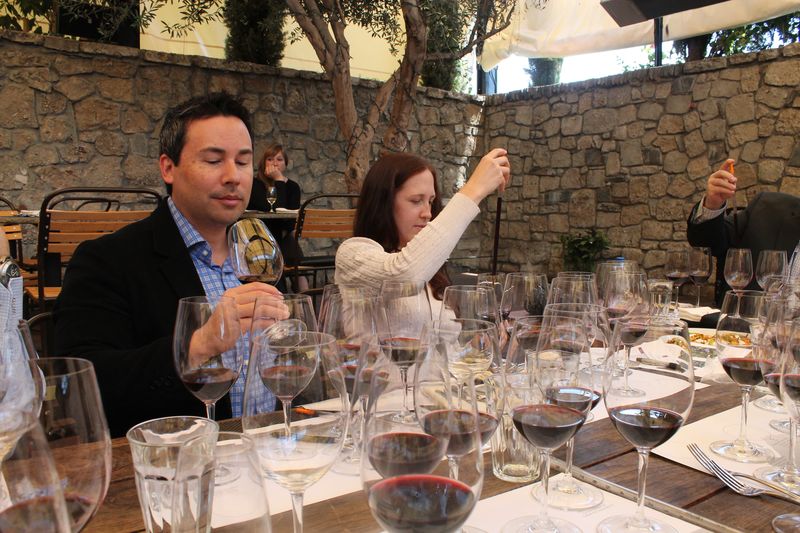
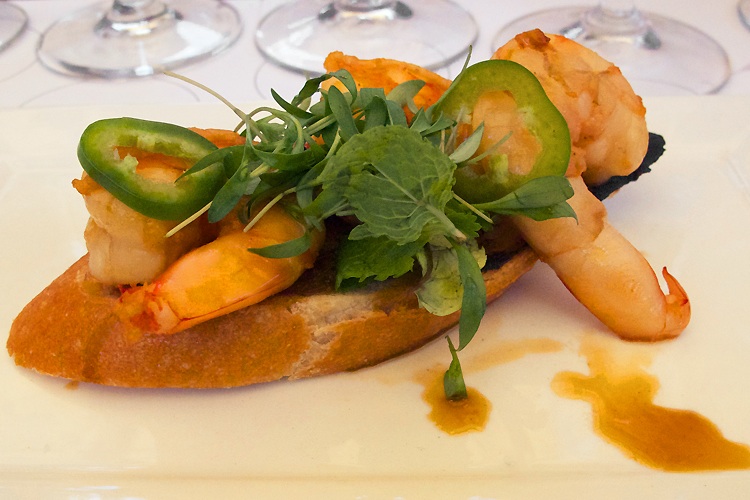
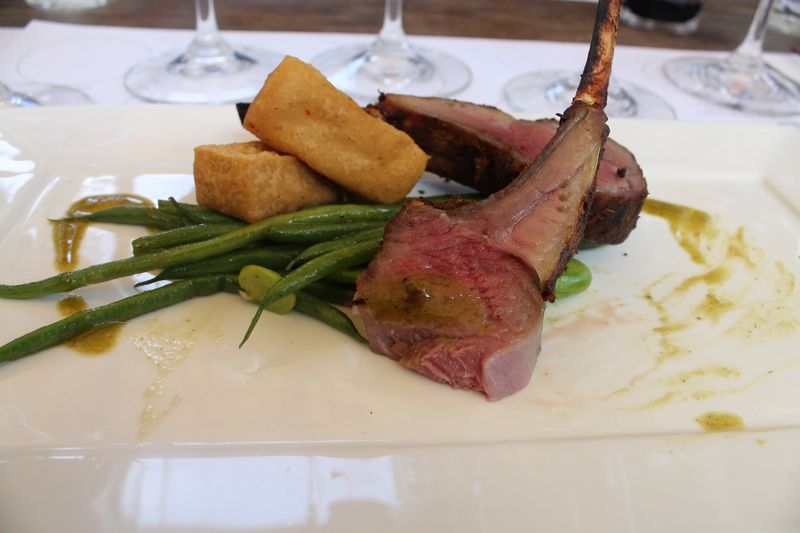
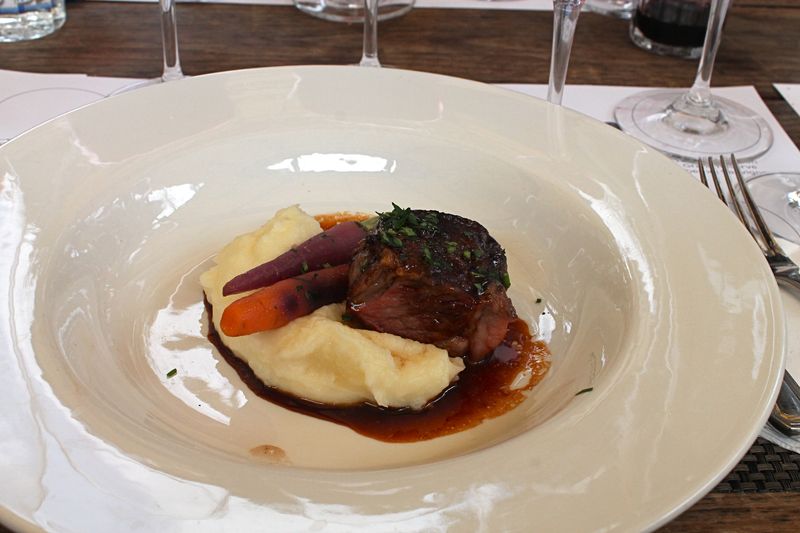




1 Comment
Very cool!
May 16, 2013